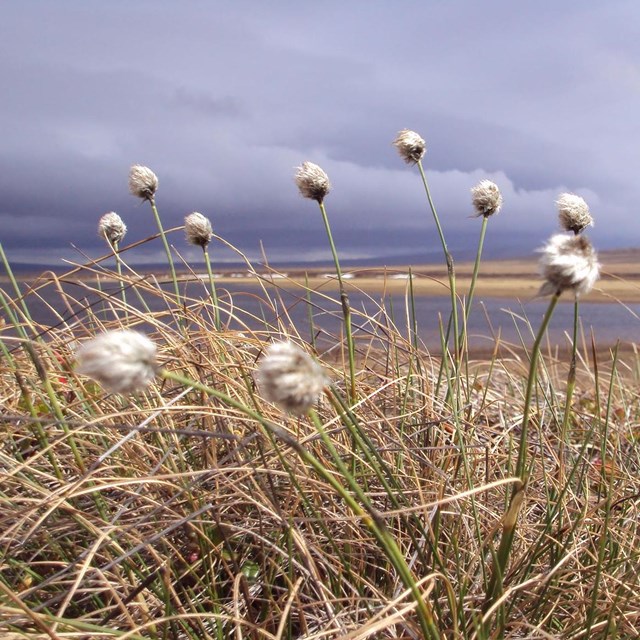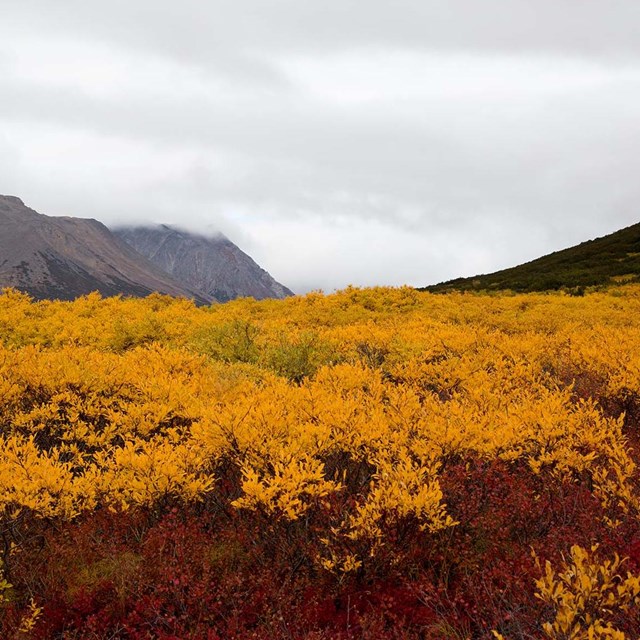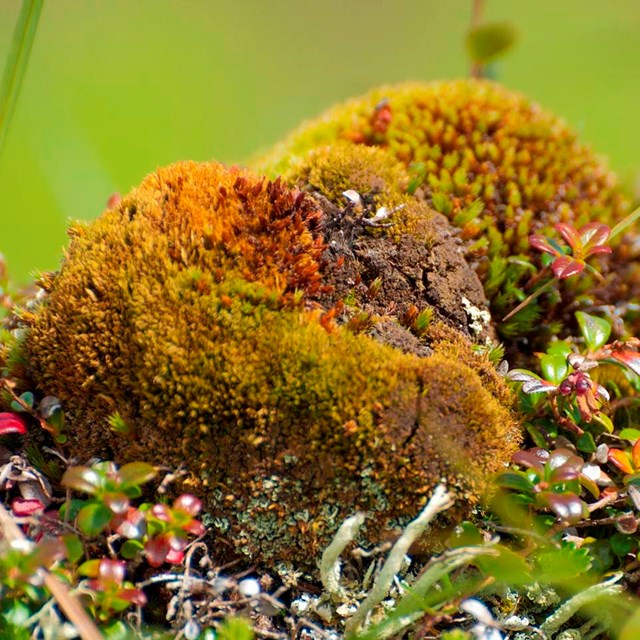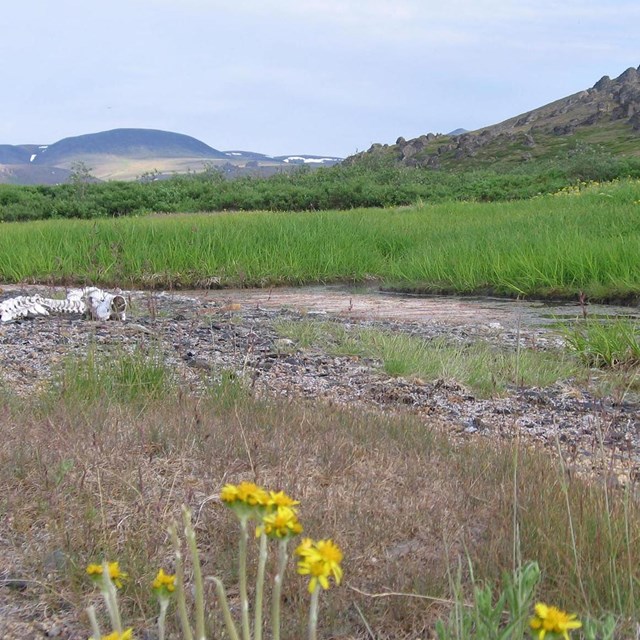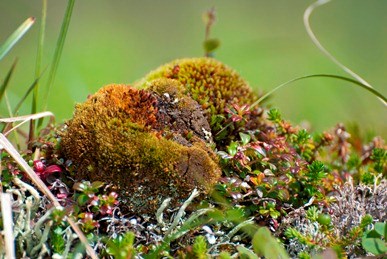
NPS Photo / Andrea Willingham Bering Land Bridge National Preserve is home to a mosaic of plant communities, including a mixture of flowers, grasses, lichens, mosses, shrubs, and even some trees. Each plant community represents a tile within this mosaic, and their development is largely influenced by climate and topography. The plants growing in Bering Land Bridge National Preserve and the surrounding area have adapted a shallow root system due to the effects of permafrost – a layer of soil below the surface that remains frozen year-round. Plants can only grow within a narrow band of active soil: the grout that holds each plant community in place. It is exposed to sunlight and moisture, allowing the absorption of nutrients. The topography of Bering Land Bridge is extremely diverse, ranging from steep mountain ridges to bottomland river valleys. Distinctive plants thrive in terrestrial and aquatic environments, favoring upland ridges and slopes, along meandering riverbanks, and backwater marshes and meadows. Examine just a small section of tundra and you will find it covered with a dozen different species. Each environment represents a unique tile that fits perfectly within the mosaic of plant communities in Bering Land Bridge National Preserve.
|
Last updated: December 10, 2025


